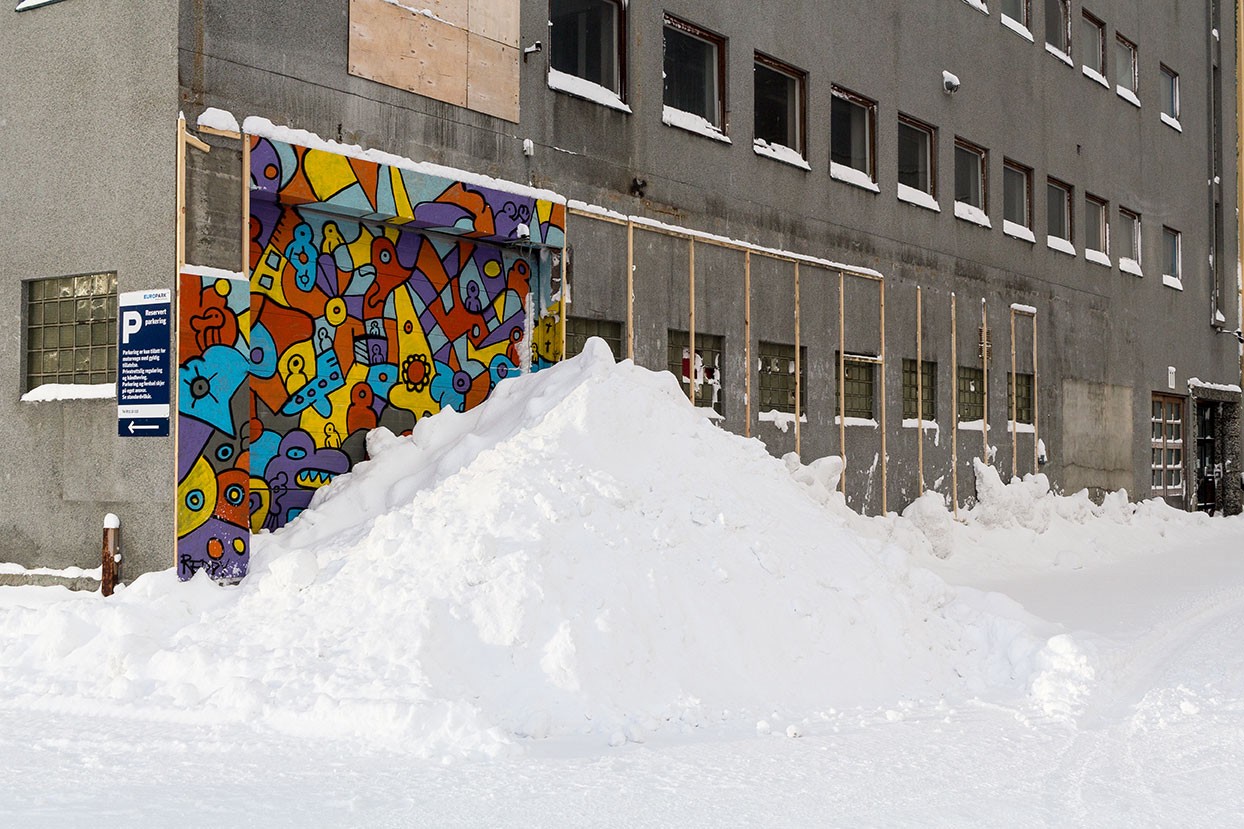
Every winter, cities in northern latitudes around the world face a tricky problem–how to get rid of the vast amounts of snow piling up on their pavement. Big snowfalls gum up transport infrastructure and can sometimes sever electrical, gas and communication lines. So what’s the best way to get rid of the white stuff before it causes too much disruption?

Pile It Up
The most common approach, and the easiest when there’s not too much snow, is just shoving it somewhere out of the way. Snow plows clear the centers of streets to allow traffic to pass, and then trucks carry snow away to “snow farms,” normally just vacant lots around the city that are slowly filled up over the course of a winter. In the springtime, these huge piles of ice melt away into smaller, but rather less sightly heaps of grit and dirt.

Dragons and Flamethrowers
In areas where there’s no land suitable for dumping, another solution is to melt the snow down into water and pour it into the city’s sewers. Melters on wheels, sometimes known as Snow Dragons, contain heat sources that can melt up to 60,000 pounds of snow an hour, filter out anything nasty in the snow, and then send what’s left down a storm drain. These types of machines have only been developed in recent decades, however. Previously, things were trickier–leading the 1948 mayor of Boston to write a letter to the president of MIT demanding that he ask his engineers to design anti-snow flamethrowers. It’s not recorded how the president responded.

Save It For Summer
Japan and the Nordic countries have developed systems for stuffing snow into large insulated rooms and then keeping it until the summer to use as air conditioning. The New Chitose Airport terminal in Sapporo, Hokkaido, avoids 30 percent of the airport’s summer cooling needs in this way, and Sundsvall hospital in Sweden uses a 2.1-million-cubic-foot pile of stored winter snow for the same purpose. A few years back, it was reported that the city of Ottawa in Canada was looking into the technology, too. In many ways, this is just an update of the way many cultures have long used winter ice for summer refrigeration.

Dump It into the Sea
Actually, don’t do this. In the past, dumping snow into lakes, rivers, or oceans was a common solution, but it’s mostly outlawed today because of the huge environmental impact. When you scrape snow off a street, you also scrape up whatever else is on the road, including litter and plenty of toxic chemicals and pollutants. It can also leave floating blocks of ice in the water that cause navigational hazards. So if you ever see snow being dumped into a body of water, report it to the authorities.

Build a Castle
If all else fails, you can always build the snow into a massive castle and turn it into a tourist attraction. That’s what the town of Kemi in Finland did in 1995, and the structure has been rebuilt every winter since. The Snow Castle of Kemi is huge–in the past it’s reached three stories high and sprawls across nearly 216,000 square feet. It’s built out of blocks formed by spraying snow into moulds, though there isn’t always enough natural snow each year so sometimes snowmakers pump water out of the Baltic Sea to create more. It has an art gallery, restaurant, hotel, and chapel inside where people come to get married. If you’d like to visit, it’s usually open until the start of April.

How We Get To Next was a magazine that explored the future of science, technology, and culture from 2014 to 2019. This article is part of our Nature & Climate section, which looks at how human activity is changing the planet–for better or worse. Click the logo to read more.

